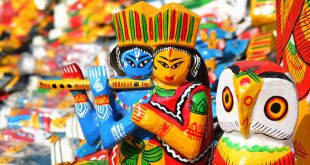 The Most Noble Order of the Garter, the highest British Order of Knighthood, is as sought-after and honoured now as it was over six hundred years ago. The exact date of the foundation of the order, which John Selden, the historian, described as exceeding ‘in majesty, honour and fame all Chivalrous Orders of the World’, is uncertain. One version tells of a ball held by King Edward III at his court near Calais to celebrate his victories in France. The Countess of Salisbury’s garter broke and dropped to the floor. The king picked it up and, noting the lady’s embarrassment, rebuked onlookers with the words ‘Honi soit qui mal y pense‘ (Dishonoured be he who think evil of it’). he then tied the garter round his knee, saying: ‘I will make of it ere long the most honourable garter that ever was worn’.
The Most Noble Order of the Garter, the highest British Order of Knighthood, is as sought-after and honoured now as it was over six hundred years ago. The exact date of the foundation of the order, which John Selden, the historian, described as exceeding ‘in majesty, honour and fame all Chivalrous Orders of the World’, is uncertain. One version tells of a ball held by King Edward III at his court near Calais to celebrate his victories in France. The Countess of Salisbury’s garter broke and dropped to the floor. The king picked it up and, noting the lady’s embarrassment, rebuked onlookers with the words ‘Honi soit qui mal y pense‘ (Dishonoured be he who think evil of it’). he then tied the garter round his knee, saying: ‘I will make of it ere long the most honourable garter that ever was worn’.
The insignia comprises the garter itself, made of dark blue velvet edged with gold, and bearing the motto ‘Honi soit qui mal y pense‘ in gold letters; the star, with St George’s Cross; and a collar of gold, with a badge. King Henry VII introduced a collar for the order. This was of gold and enamel and represented St. George (patron saint of England) in armour on horseback, slaying the dragon with his spear. This badge came to be known as the George.
The order of the Garter has, since 28 June 1831, consisted of the Sovereign and twenty-four Knights Companions, such lineal descendants of King George I as may have been elected and, finally, of those Sovereigns and Extra Knights who have been admitted by special statues.
 Kids Portal For Parents India Kids Network
Kids Portal For Parents India Kids Network






